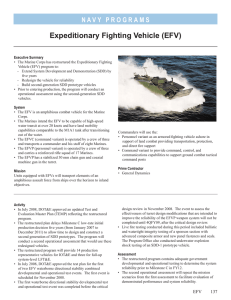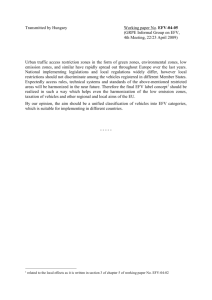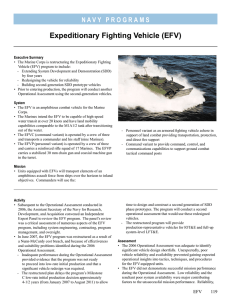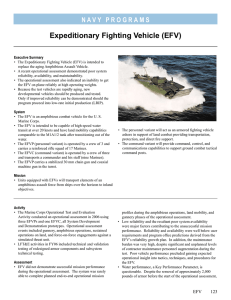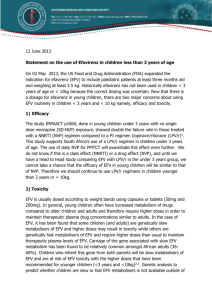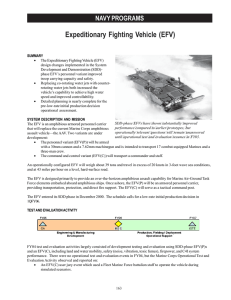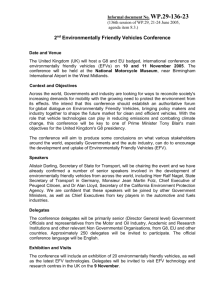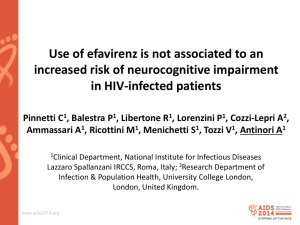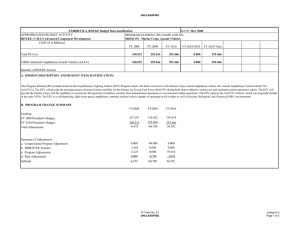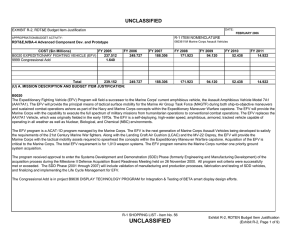Expeditionary Fighting Vehicle (EFV)
advertisement
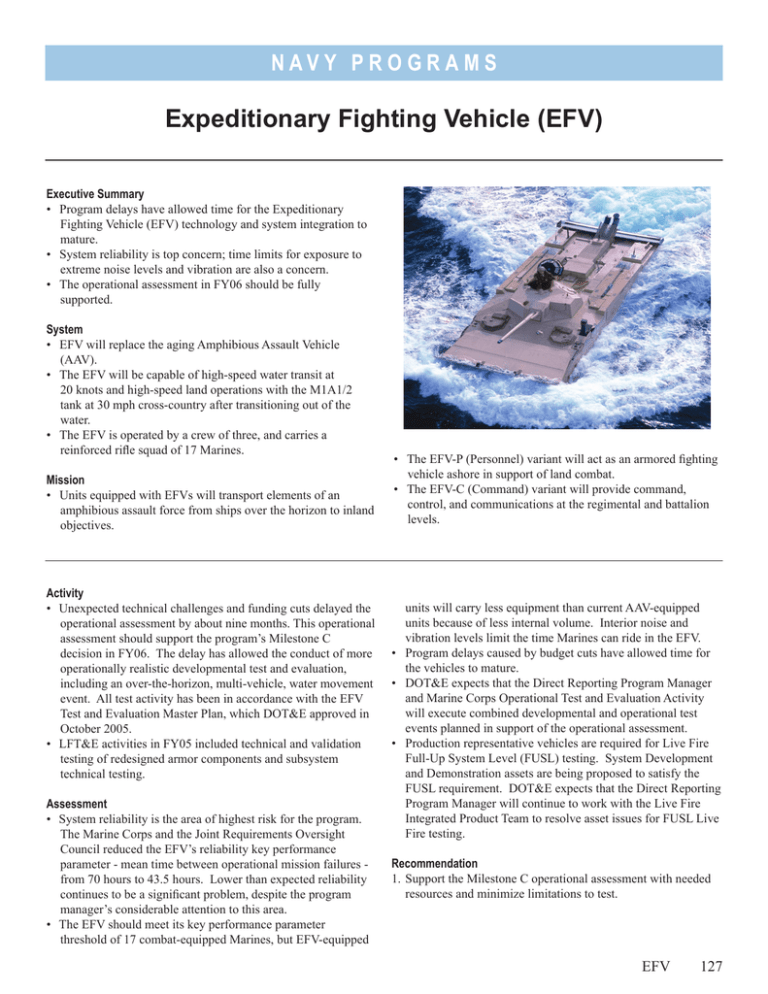
N AV Y P R O G R A M S Expeditionary Fighting Vehicle (EFV) Executive Summary • Program delays have allowed time for the Expeditionary Fighting Vehicle (EFV) technology and system integration to mature. • System reliability is top concern; time limits for exposure to extreme noise levels and vibration are also a concern. • The operational assessment in FY06 should be fully supported. System • EFV will replace the aging Amphibious Assault Vehicle (AAV). • The EFV will be capable of high-speed water transit at 20 knots and high-speed land operations with the M1A1/2 tank at 30 mph cross-country after transitioning out of the water. • The EFV is operated by a crew of three, and carries a reinforced rifle squad of 17 Marines. Mission • Units equipped with EFVs will transport elements of an amphibious assault force from ships over the horizon to inland objectives. Activity • Unexpected technical challenges and funding cuts delayed the operational assessment by about nine months. This operational assessment should support the program’s Milestone C decision in FY06. The delay has allowed the conduct of more operationally realistic developmental test and evaluation, including an over-the-horizon, multi-vehicle, water movement event. All test activity has been in accordance with the EFV Test and Evaluation Master Plan, which DOT&E approved in October 2005. • LFT&E activities in FY05 included technical and validation testing of redesigned armor components and subsystem technical testing. Assessment • System reliability is the area of highest risk for the program. The Marine Corps and the Joint Requirements Oversight Council reduced the EFV’s reliability key performance parameter - mean time between operational mission failures from 70 hours to 43.5 hours. Lower than expected reliability continues to be a significant problem, despite the program manager’s considerable attention to this area. • The EFV should meet its key performance parameter threshold of 17 combat-equipped Marines, but EFV-equipped • The EFV-P (Personnel) variant will act as an armored fighting vehicle ashore in support of land combat. • The EFV-C (Command) variant will provide command, control, and communications at the regimental and battalion levels. units will carry less equipment than current AAV-equipped units because of less internal volume. Interior noise and vibration levels limit the time Marines can ride in the EFV. • Program delays caused by budget cuts have allowed time for the vehicles to mature. • DOT&E expects that the Direct Reporting Program Manager and Marine Corps Operational Test and Evaluation Activity will execute combined developmental and operational test events planned in support of the operational assessment. • Production representative vehicles are required for Live Fire Full-Up System Level (FUSL) testing. System Development and Demonstration assets are being proposed to satisfy the FUSL requirement. DOT&E expects that the Direct Reporting Program Manager will continue to work with the Live Fire Integrated Product Team to resolve asset issues for FUSL Live Fire testing. Recommendation 1. Support the Milestone C operational assessment with needed resources and minimize limitations to test. EFV 127 N AV Y P R O G R A M S 128
